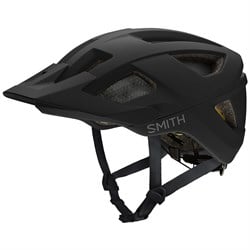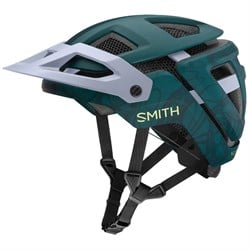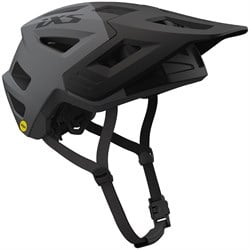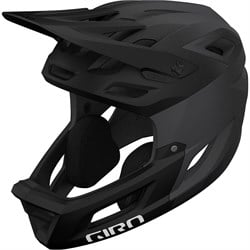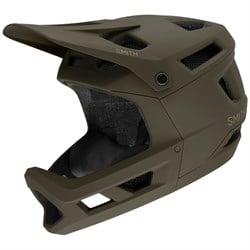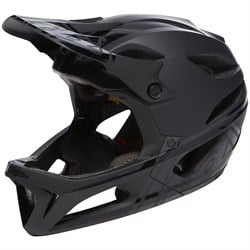How to Choose a Bike Helmet
Whether you’re a casual rider who enjoys cruising into town on your singlespeed or an enduro athlete gearing up for your next off-road adventure, a bike helmet is a necessary accessory. Thanks to recent innovations in helmet design, bike helmets are becoming lighter and more comfortable to wear, all while further reducing and preventing head injuries. The trick is you’ve got to be wearing one for it to do its job (kind of a no-brainer)! Read on to find the helmet that’s right for you, as well as how to dial in the perfect fit.
How to Choose the Right Size Bike Helmet?
Whether you’re a casual recreationalist who enjoys cruising into town on your singlespeed or an enduro athlete gearing up for your next off-road adventure, a bike helmet is a necessary accessory. Thanks to recent innovations in helmet design, bike helmets have gotten lighter, more comfortable, prevent an increasing amount of head injuries. The trick is you’ve got to be wearing one for it to do its job (kind of a no-brainer)! Read on to find the helmet that’s right for you, as well as how to dial in the perfect fit.
1. Measure Your Head
Take a soft measuring tape and wrap it around your head about one inch above your eyebrows and ears. Make sure the tape is level. Most helmets are measured in centimeters, so measure your head in centimeters if you can. In case you don't have a centimeter tape, the conversion ratio is 1 inch = 2.54 cm. Then, choose a helmet size to match your measurement.
Don’t have a soft tape measure? Take a piece of string and wrap it around your head, then measure the string.
2. Try it On
After you receive your new helmet, put it on. The helmet should sit level on your head. The front of the helmet should sit one inch (or less) above your eyebrows, protecting your forehead. Adjust the fit using the helmet’s retention system (located in the back, usually a click wheel or a ratchet system). The helmet should feel snug. You don’t want any excess space between the helmet and your head. Pay attention to any pressure points as they may be an indication that the helmet is too small.
3. Buckle Up
Connect the chin strap and tighten it so that it’s snug but comfortable beneath your chin. You should be able to fit no more than one finger between the strap and your chin. The straps should form a “V” as they rest under each ear. With the chinstrap buckled, open your mouth wide. You should feel the helmet press against the top of your head.
4. Shake Test
Push the helmet from side to side and back to front. If the helmet shifts noticeably, try adjusting the helmet using its retention system. The helmet shouldn’t be able to move more than one inch in any direction during the shake test once you’ve dialed in the perfect fit.
5. Ready To Ride
Bike helmet straps can loosen on rides and during travel. Give your helmet a quick shake test before every outing. Then you’re ready to ride!
How to Choose the Right Size Kids' Bike Helemet?
All of the same rules described above apply to kids’ helmets. However, fitting kids for helmets can be more difficult because they don’t know exactly how to describe to you how snug their helmet feels. Be sure to pay extra attention to how snug the helmet is and if your kids complain about anything that hurts. Do not size a helmet with room to grow; if it is too large it is unsafe.
Styles of Bike Helmets
Not all helmets are created equal. At evo, we carry a variety of helmet styles to meet the needs of riders from the committed commuter to the downhill enthusiast. Road/commuter bike helmets tend to be lightweight and aerodynamic, and feature larger vents that provide cooling for long distance rides and hill climbs. Mountain bike helmets tend to feature additional protection for off-road use, especially in the back-of-head area where they’re engineered to provide protection from a backward or sideways fall. These helmets may feature thicker chin-straps and often include visors, lending protection from the elements (plus they look rad).Are you an avid trail rider who wants to dabble in the peloton? Your mountain bike helmet can often double as protection on a road ride. At the same time, if you’re an avid roadie who wants to hop on the trails, it’s a good idea to opt for a burlier mountain bike style helmet with protection where it matters most.
Shop Urban/Commuter Bike Helmets Shop Mountain Bike Helmets
Half Shell Bike Helmets
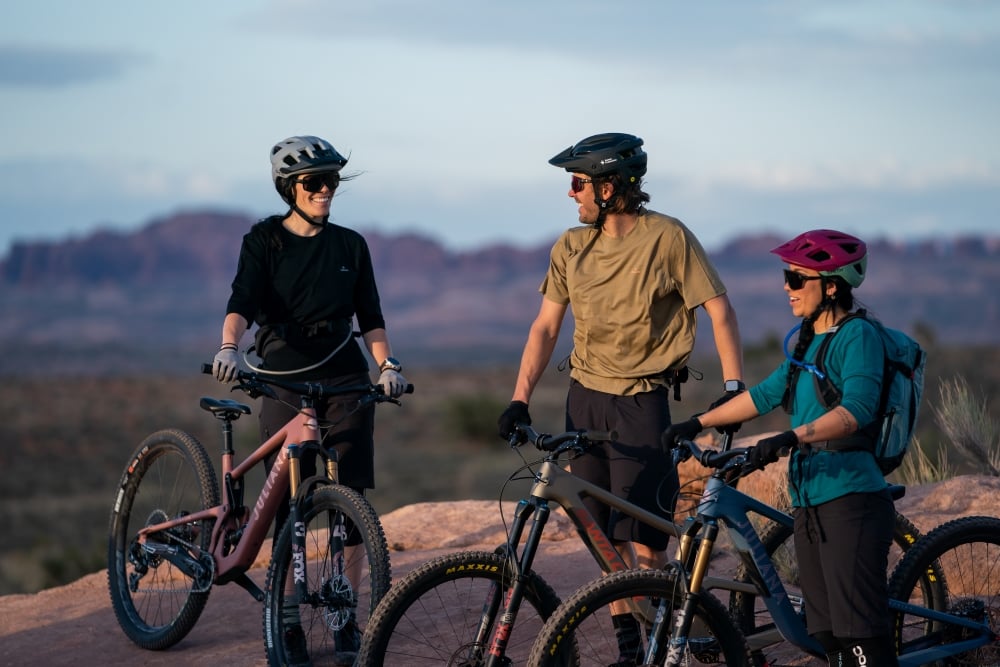
Half shell helmets are by far the most prevelant helmet style on the market today. Half shell helmets come in a range of options in terms of coverage and design – from minimalist, lightweight models with lots of venting, to burly offerings with ample coverage for off-road exploration. Roadies and commuters are likely to prefer half shell helmets with added ventilation and less coverage in the back-of -head area, while mountain bikers will gravitate toward half shell “plus” styles with bonus protection in the back-of-head, temple, ear, and/or jaw areas for extra protection on the trail.
Full Face Bike Helmets

Full face helmets offer the most complete protection on the market today. Consisting of a solid one-piece shell plus a full jaw guard, full face helmets offer ample protection but typically sacrifice on weight and comfort. Full face helmets are most commonly worn by downhill mountain bikers who go big and fast with the chance of falling hard.
Bike Helmet Construction
It is important to understand the way a helmet is built in order to understand the often very different prices, styles, safety certifications and materials used. Bike helmets are made up of three main parts: a Shell, a Liner, and Straps.
Shell
The shell is your bike helmet’s outer layer—the part that people can see when you’re riding. It’s typically made from an impact-resistant plastic or composite and is designed to spread the force of an impact over a broader area, protecting your head in a crash.
Liner
The liner is located directly beneath the outer shell and does most of the work during a crash and is typically made from crushable or impact absorbing foam. During a crash, the liner absorbs the impact energy causing less of it to be transmitted to your noggin.
Straps
Made from nylon or polypropylene, straps keep your helmet attached to your head. Are your bike helmet straps fraying? It might be time to invest in a new helmet since your helmet can’t effectively protect you in a crash without a fully functioning closure system.
Construction Types
There are two main construction types for bike helmets, in-mold and hard shell.
In-Mold Bike Helmets
Hard Shell Bike Helmets
Bike Helmet Materials Glossary
ABS (Acrylonitrile Butadiene Styrene)
Tough and impact resistant, ABS is frequently used to manufacture hard shell helmets. Did you play with Legos when you were a kid (or still do)? They’re made from ABS too!
Aramid/Kevlar
The same stuff bulletproof vests are made of; aramid/kevlar can be used to augment bike helmets in strategic locations to ensure greater durability and protection.
Carbon Fiber
Extremely strong and lightweight, carbon fiber can be used to augment helmets while reducing weight. This can be especially attractive on full face mountain bike helmets that offer superior protection but weigh more than half shell helmets.
EPS (Expanded Polystyrene) Foam
EPS foam resembles the stuff old-school picnic coolers are made from. On impact, the foam gets crushed rather than your head. Unfortunately EPS foam is single-use--it doesn’t rebound after a crash. That’s why you should always replace your helmet after a crash.
EPP (Expanded PolyPropylene) Foam
More commonly used on ski helmets, EPP is similar in appearance to EPS. EPP is a multi-impact foam that recovers its shape and most of its impact protection after a crash. It costs more than EPS and usually results in a helmet that is a bit thicker than one with EPS.
Honeycomb / Koroyd Straws
Koroyd Straws offer an alternative to the traditional foam helmet liner. They’re formed in an extrusion process that creates an energy absorbent honeycomb-like structure. Koroyd Straws crush in a controlled manner, efficiently decelerating the energy from an impact.
Polycarbonate
A strong yet lightweight plastic, polycarbonate is used in the construction of the many current in-mold and hard shell bike helmets. During the in-mold process, a polycarbonate shell is bonded to the liner resulting in an even stronger helmet.
Bike Helmet Fit Systems
Most bike helmets feature a ratcheting fit system or removable pads to adjust the fit.
Ratcheting Bike Helmet Fit System
Helmets with a ratcheting fit system may feature a “dial,” “crank,” or “ring” at the back of the helmet that allows you to customize the fit. Benefits of ratcheting fit systems include that they are designed to provide a close fit using only thin pads and the “dial” isn’t likely to break down from sweat.
Removable Pads
Helmets with removable pads come with at least one set of pads of varying thickness, allowing you to fully customize the helmet’s fit. Select the pads with the thickness that feels right to you – the pads should touch your head evenly all the way around without making the helmet feel too tight.
Bike Helmet Ventilation
Whether you’re white knuckling your way down a rock-infested riverbed or busting a lung keeping pace with the peloton, staying cool is an important factor when riding. All modern bike helmets feature some form of venting designed to draw cool air over your head through the front ports and expel warm, sweaty air through the back.
Searching for a lightweight helmet that lets you move fast on pavement? Helmets with generous venting tend to be lightweight but sacrifice on impact protection during a crash. On the other hand all-mountain enthusiasts might gravitate (no pun intended) toward helmets with fewer vents that offer superior security during falls.
When Do you Need to Replace Your Bike Helmet?
You’ve heard it before: Always replace your helmet after a crash. Why? For starters, the foam most helmets are made from doesn’t recover after a crash. Even if your helmet hasn’t endured visible damage, its safety may be compromised following impact. Bottom line? See it as an opportunity to trade-up for a sweet new style and invest in a new helmet after you take a tumble.
Haven’t taken a tumble in a while? Most manufacturers recommend replacing your helmet every three to five years.
How to Clean a Bike Helmet?
Clean your helmet with mild soap and warm water. Most pads can be removed for washing. Don’t use solvents or strong chemicals to clean your helmet as these can damage the outer shell.
Bike Helmet Safety Standards & Technology
Helmets made in the USA must meet the US Consumer Product Safety Commission standard, so look for a CPSC sticker on any bike helmet you buy. Other safety standards include:
EN 1078 - Field of Vision Test, Shock Absorption Test, Retention Systems Test.
CPSC 1203 - Peripheral Vision Test, Positional Stability Test, Retention Strength Test, Impact Attenuation Test.
Snell B-95 - Impact Management, Helmet Positional Ability, Retention System Strength, Extent of Protection.
ASTM F192 - For Downhill MTB Helmets - Focuses on greater impact protection and provides performance criteria for chin bars on full face helmets.
What is a MIPS Bike Helmet?
MIPS is an acronym for Multi-Directional Impact Protection System. MIPS is a world leader in head and neck protection as a result of over 30 years of experience from its creators in the field of medical technology and research.
MIPS technology mimics the brain’s protective structure by reducing rotational forces caused by angled impacts to the head. The helmet’s shell and liner are separated by a low friction layer which allows the helmet to slide, noticeably reducing trauma to the brain in the case of oblique impacts. These angled impacts are considerably more common in action sports compared to the blunt force impacts for which traditional helmets are typically tested.

For more information about MIPS, check out our MIPS Helmet Technology Guide.
Need a tune up? Bring your bike in for maintenance at any of our flagship locations for assistance:
Learn More With Our Other Bike Guides:
- Mountain Bikes - How to Choose
- Mountain Bikes - Size and Fit Guide
- Mountain Bikes - How to Get Started Mountain Biking
- Mountain Bikes - How to Choose a Wheel Size
- Mountain Bikes - Suspension Basics
- Mountain Bikes - How to Choose a Mountian Bike Dropper Post
- Mountain Bikes - How to Choose MTB Handlebars
- Mountain Bikes - How to Choose MTB Pedals
- Mountain Bikes - How to Change Bike Pedals
- Mountain Bikes - How to Clean
- Mountain Bikes - How to Bleed SRAM Brakes
- Mountain Bikes - How to Bleed Shimano Brakes
- Mountain Bikes - How to Convert to Tubeless Tires
- Mountain Bikes - How to Replace Internal Cable Housing
- Mountain Bikes - How to Adjust Your Rear Derailleur
- Mountain Bikes - How to Bleed a RockShox Reverb Seatpost
- Mountain Bikes - How to Service Fox and RockShox Fork Lowers
- Mountain Biking - What to Bring Mountain Biking
- Mountain Biking - What to Wear Mountain Biking
- Mountain Biking - How to Choose Knee Pads
- Bikes - Size and Fit Guide
- Gravel Bikes - How To Get Started Gravel Biking
- eBikes - Classes, Features & More
- eBikes - Where to Ride eBikes
- Bike Accessories - Helmet Size & Fit Guide
- Bike Accessories - How to Choose Bike Shoes
- Bikes - How to Choose Bike Tires
- Bikes - How to Change Bike Pedals
- Bikes - How to Repair & Replace a Bike Chain
- Bikes - How to Choose Accessories
- Bikes - Urban Riding Tips
- Travel & Destination Guides - Where to Mountain Bike
Learn About our Favorite Bike Gear:
The Best Women's Mountain Bikes
The Best Electric Mountain Bikes
The Best Mountain Bikes for Beginners
The Best Mountain Bikes Under $3,000
The Best Trail Bikes
The Best Enduro Bikes
The Best Gravel Bikes
The Best Mountain Bike Helmets
The Best Full Face MTB Helmets
The Best Mountain Bike Knee Pads
The Best Mountain Bike Elbow Pads
The Best Mountain Bike Shorts
The Best Women's Bike Shorts
The Best Mountain Bike Pants
The Best Mountain Bike Jerseys
The Best Mountain Bike Accessories
The Best Value Mountain Bike Helmets
The Best Dropper Posts
The Best Mountain Bike Forks
The Best Mountain Bike Stems
The Best Padded Mountain Bike Shorts
The Best Mountain Bikes Handlebars
The Best Gifts for Mountain Bikers
The Best Mountain Bike Gloves
The Best Mountain Bike Socks
The Best MTB Fanny Packs
The Best Mountain Bike Backpacks
The Best Clipless Mountain Bike Shoes
The Best Flat Pedal MTB Bike Shoes
The Best Mountain Bike Tires
The Best Mountain Bike Flat Pedals
The Best Bike Racks
The Best Bike Glasses
The Best Bike Goggles
The Best Women's Mountain Bike Jerseys
The Best Tailgate Bike Pads
The Best Bike Trainers
The Best Hitch Bike Racks
The Best Clipless MTB Pedals
The Best Mountain Bikes Handlebar Bags
The Best Mountain Bike Saddles
The Best MTB Wheels
The Best MTB Grips
The Best Mountain Bike Multi Tools
The Best Mountain Bike Seat Bags
Popular Bike Searches
This is evo. We are a ski, snowboard, wake, skate, bike, surf, camp, and clothing online retailer with physical stores in Seattle, Portland, Denver, Salt Lake City, Whistler, and Snoqualmie Pass. Our goal is to provide you with great information to make both your purchase and upkeep easy.
evo also likes to travel to remote places across the globe in search of world-class powder turns, epic waves, or legendary mountain biking locations through evoTrip Adventure Travel Trips. Or, if you prefer to travel on your own, check out our ski & snowboard resort travel guides and mountain bike trail guides.
Still have questions? Please call our customer care team at 1.866.386.1590 during Customer Care Hours. They can help you find the right setup to fit your needs.
